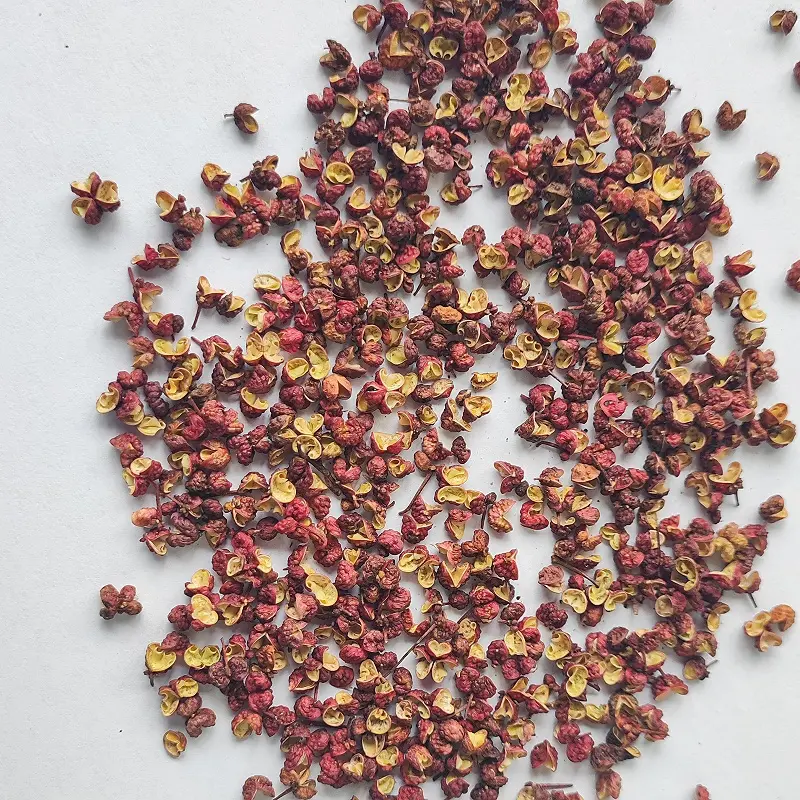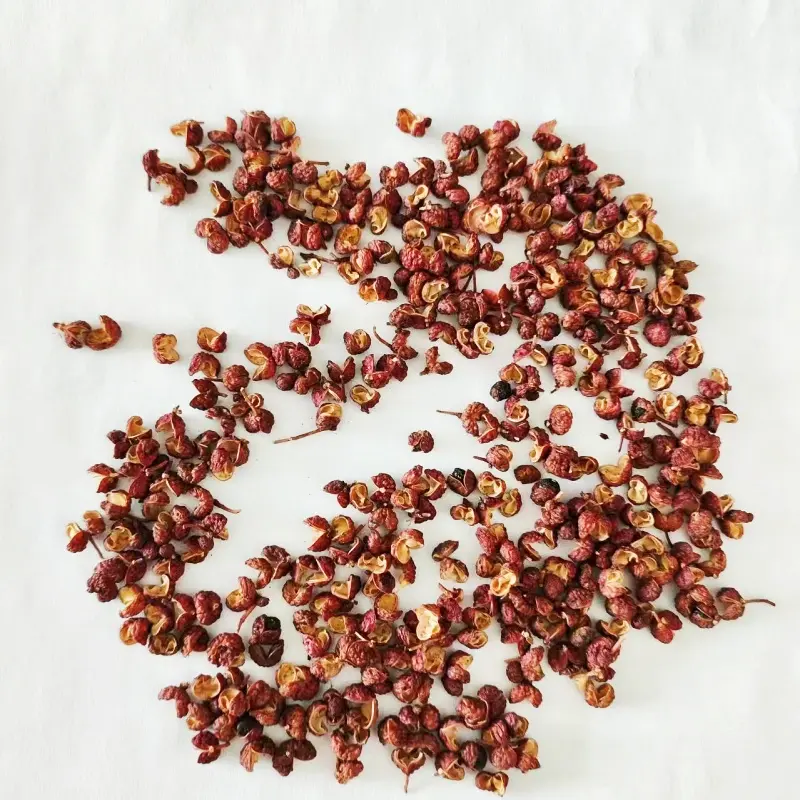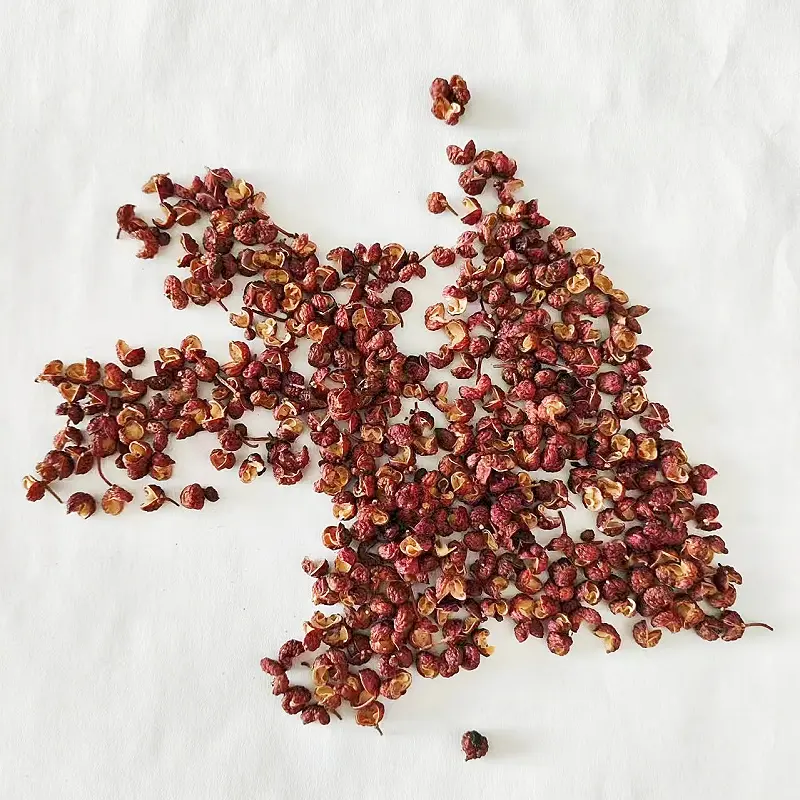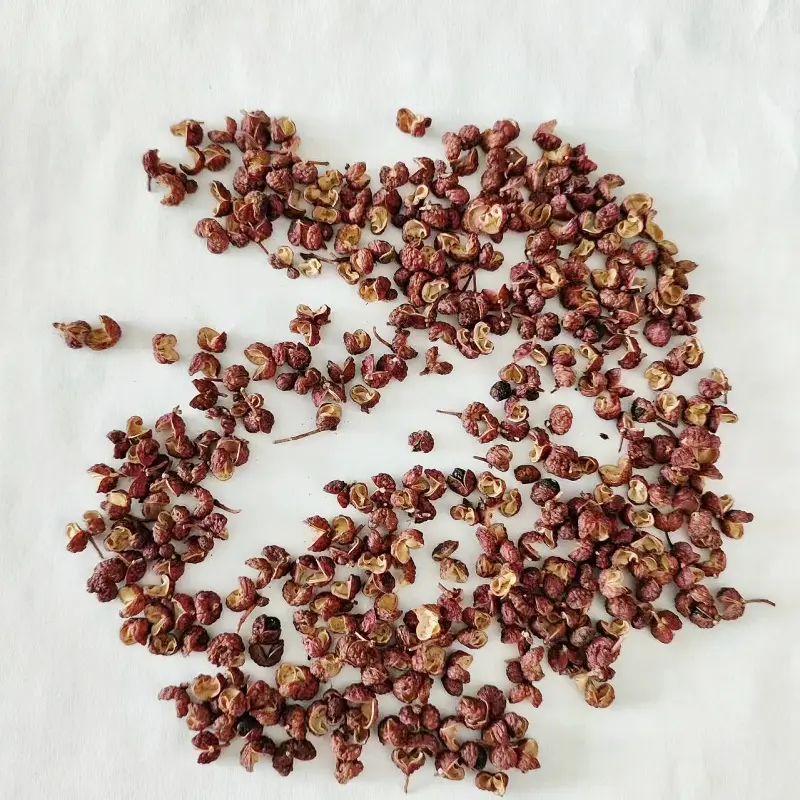What are Green Sichuan peppercorns?
Green Sichuan peppercorns have aromatic, stomachic, warming, cold-relieving, dehumidifying, and pain-relieving properties. They can remove the fishy odor of various meats, stimulate salivation, and increase appetite. In fact, they share similar functions and nutritional value with red Sichuan peppercorns.
Some say green Sichuan peppercorns are simply unripe red peppercorns, but this is not true. Green Sichuan peppercorns, also known as "numbing peppercorns," are two different varieties.
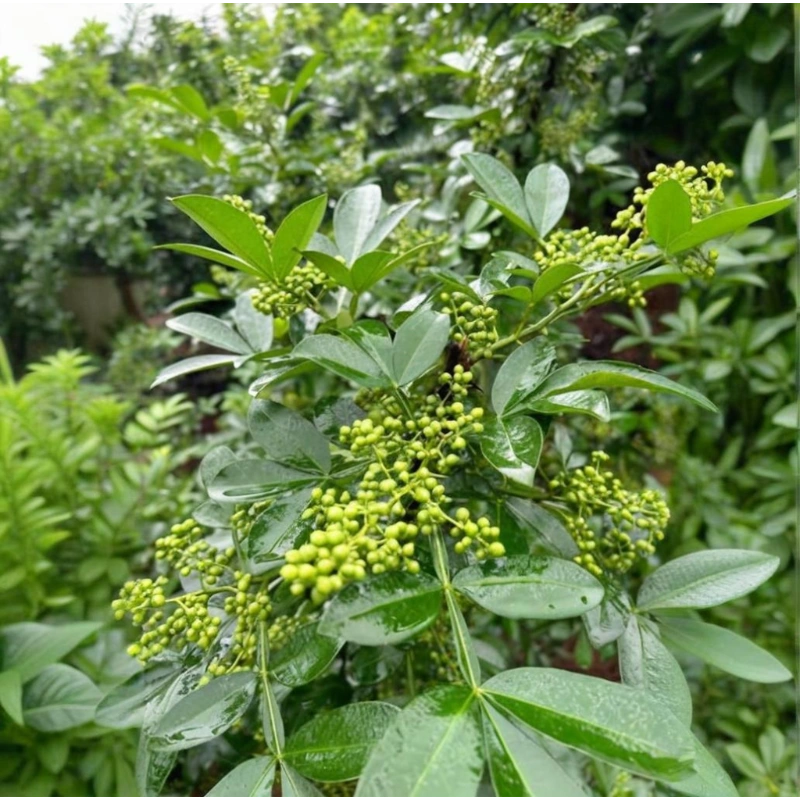
Green Sichuan peppercorns are divided into two types: vine peppercorns and numbing peppercorns. Vine peppercorns are the most prominent of these, with their fresh fruit possessing a unique, fragrant, rich, and lingering numbing flavor. Ma peppercorns refer to lesser-quality green Sichuan peppercorns.
Green Sichuan peppercorns are the dried pericarp of the Piper nigrum plant, a member of the Rutaceae family. Their key characteristics are a gray-green, yellow-green, to brown-green outer pericarp with a reticular pattern and numerous small, sunken oil glands. The endocarp is smooth, grayish-white or pale yellow, separated from the outer pericarp or curled up, and the remaining seeds are oval, glossy black. The fruit is large, round, green, and oily, with dense, dense, and plump oil cells. It has a delicate, mild aroma and a rich, pure, and numbing flavor.
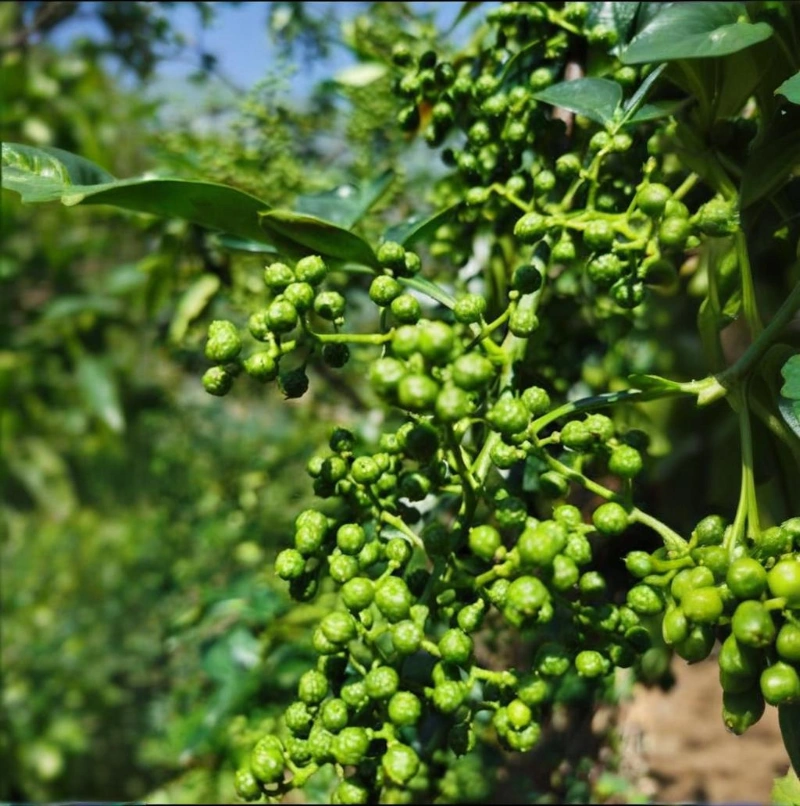
Green Sichuan peppercorns are a common condiment with a unique aroma and numbing flavor, widely used in Chinese cooking. They are best enjoyed in a variety of ways, including salads, stir-fries, stews, and pickles, enhancing the flavor and texture of dishes. Rich in volatile oils, alkaloids, and various vitamins, green Sichuan peppercorns promote digestion, have antibacterial and anti-inflammatory properties, and enhance immunity. Appropriate use of green Sichuan peppercorns not only enhances flavor but also provides health benefits.
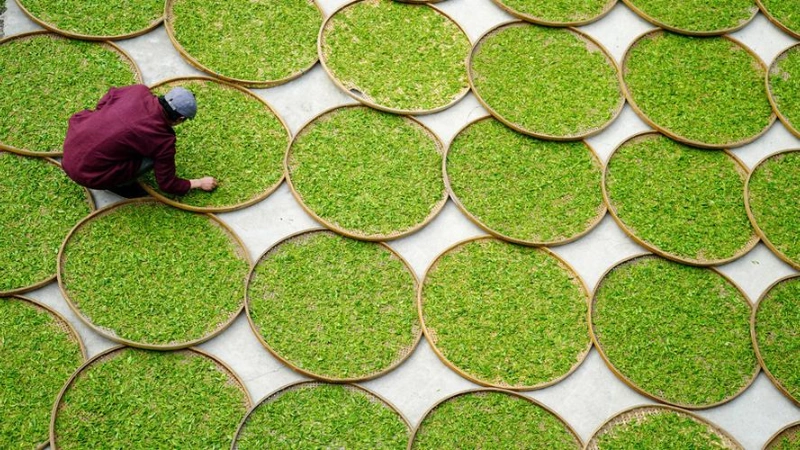
18 Ways to Use Green Sichuan Peppercorns
1.Recommended Dosage: Use 1–2 grams of green Sichuan peppercorns per serving.
Green Sichuan peppercorns enhance their numbing flavor in cold dishes. For example, when preparing cold cucumbers, wood ear mushrooms, or tofu skin, sauté the peppercorns, crush them, and sprinkle them over the dish. Pair with minced garlic, soy sauce, and vinegar for a refreshing and appetizing flavor.
2. Stir-fry: Recommended Dosage: Use 3–5 grams of green Sichuan peppercorns per dish.
For example, in stir-fried chicken with green Sichuan peppercorns, beef with green Sichuan peppercorns, or shredded potatoes with green Sichuan peppercorns, sauté the peppercorns with dried chilies, ginger, and garlic, then add the main ingredients and stir-fry for a fragrant aroma. Green Sichuan peppercorns enhance the flavor of stir-fries.
3. Stews: Recommended Dosage: Use 5–8 grams of green Sichuan peppercorns per pot of soup. Green Sichuan peppercorns add a unique numbing flavor to stews. For example, stewing spare ribs, fish head, or chicken soup with green peppercorns involves slow-cooking green peppercorns along with other spices for a rich, flavorful broth.
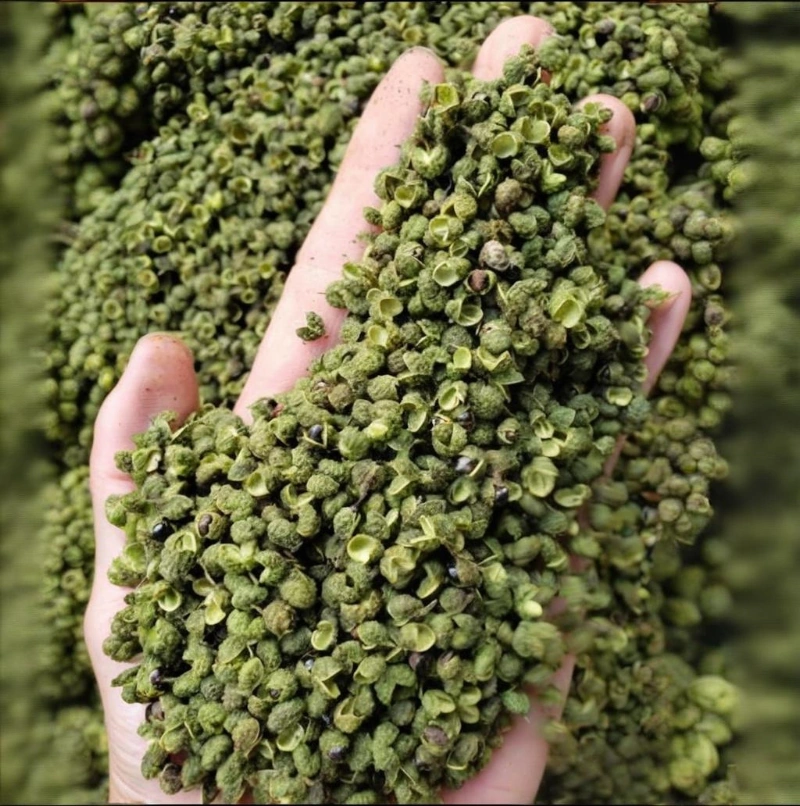
4. Recommended Dosage: Use 2–4 grams of green peppercorns per 500 grams of ingredients. Pickling: Green peppercorns impart a unique flavor to pickled ingredients. For example, marinating chicken wings, pig's trotters, or radish with green peppercorns involves mixing green peppercorns with salt, sugar, soy sauce, and other seasonings. Marinate for several hours or overnight for a rich, flavorful texture.
5. Recommended Dosage: Use 10–15 grams of green peppercorns per pot of hot pot base. Hot Pot Base: Green peppercorns are a key ingredient in hot pot base. Stir-frying green peppercorns with fermented black bean paste, dried chilies, star anise, and other spices, then adding broth and bringing to a boil creates a spicy, fragrant hot pot base perfect for dipping a variety of ingredients.
6. Dosage Recommendation: Add 1–2 grams of green peppercorn powder to every 100 grams of sauce. Seasoning Sauces: Green peppercorns can be made into seasoning sauces. Mix them with minced garlic, chili powder, soy sauce, vinegar, and other ingredients to create a dipping sauce suitable for dumplings, noodles, or barbecue.
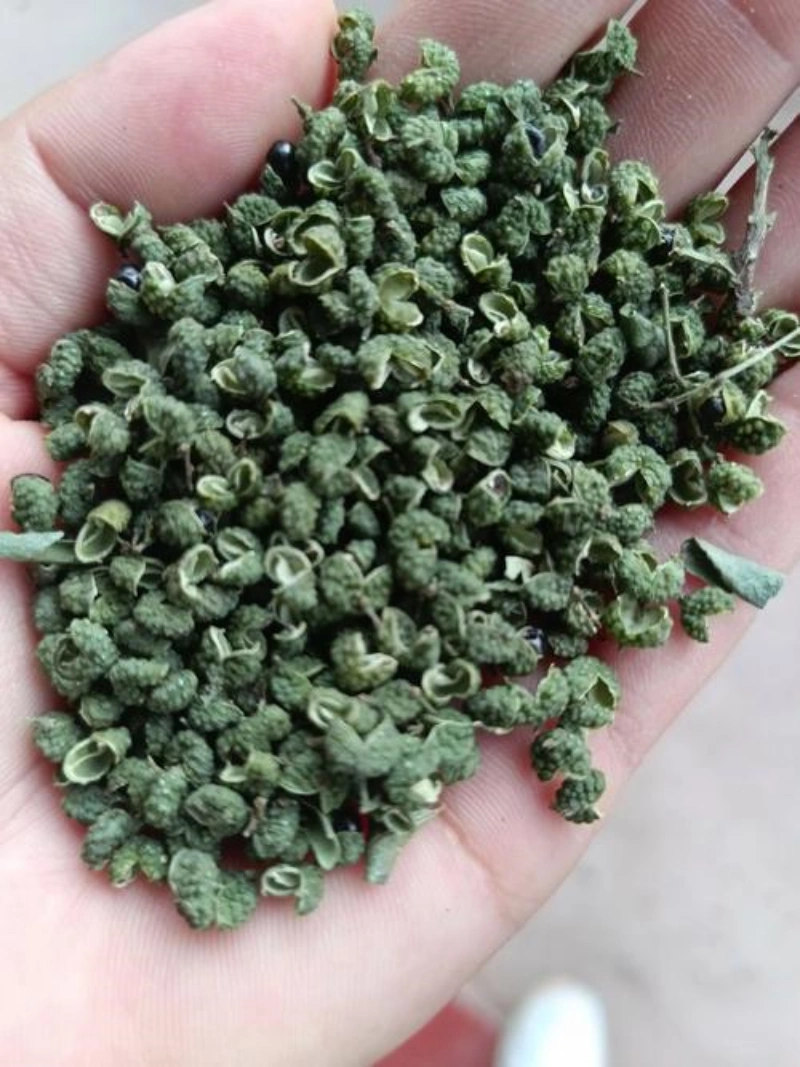
7. Dosage Recommendation: Add 1 gram of green peppercorn powder to every 500 grams of flour. Baking: Green peppercorns also play a unique role in baking. For example, in green peppercorn cookies, green peppercorn bread, or green peppercorn cakes, adding green peppercorn powder to the dough creates a lightly spicy flavor and unique flavor.
8. Dosage Recommendation: Use 1–2 green peppercorns (or 0.3 grams of green peppercorn powder) per drink. Beverages: Green peppercorns can be used to create specialty drinks, such as green peppercorn lemonade, green peppercorn honey water, or green peppercorn tea. Brewing green peppercorns with lemon slices, honey, or tea leaves creates a refreshing and refreshing drink perfect for summer.
9. Recommended Dosage: Use 2–3 grams of green peppercorns per 100 grams of sauce. Sauces: Green peppercorns can be made into sauces. For example, green peppercorn sauce, green peppercorn chili sauce, or green peppercorn garlic sauce. Mix the green peppercorns with chili peppers, minced garlic, and salt, then grind them into a sauce. It's perfect with staple foods or as a dip.
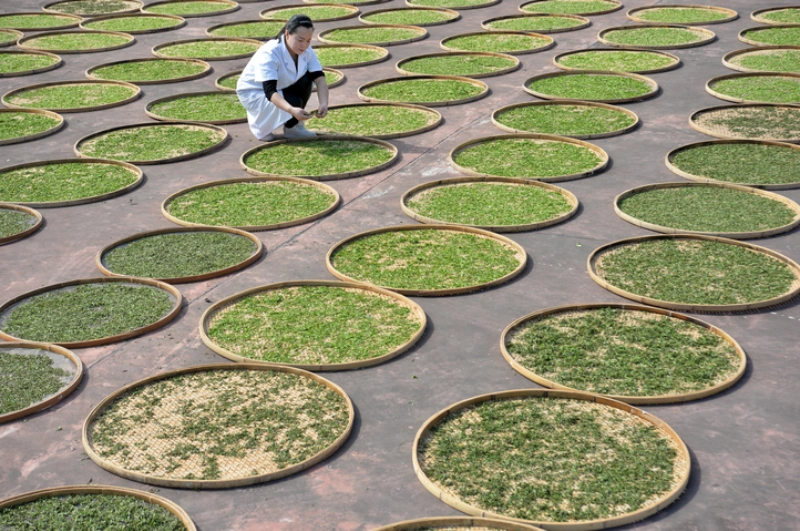
10. Recommended Dosage: Use 3–4 grams of green peppercorns per 500 grams of vegetables. Pickling: Green peppercorns add flavor to pickled vegetables. For example, you can make pickled radish, cucumber, or cabbage with green peppercorns. Mix the peppercorns with salt, sugar, vinegar, and other seasonings and marinate for several days to create a sour, spicy, and appetizing pickled vegetable.
11. Recommended Dosage: Use 2–3 grams of green peppercorn powder per 500 grams of meat. Grilling: Green peppercorns enhance the flavor of grilled ingredients. For example, sprinkle green peppercorn powder on grilled chicken wings, lamb skewers, or eggplant. This creates a fragrant aroma and a unique texture.
12. Recommended Dosage: Add 1 gram of green peppercorn powder to every 200 grams of batter. Frying: Green peppercorns add a numbing flavor to fried ingredients. For example, in fried chicken, shrimp, or tofu with green peppercorns, mix green peppercorn powder with flour and starch, coat the ingredients, and fry them for a crispy exterior and tender interior.
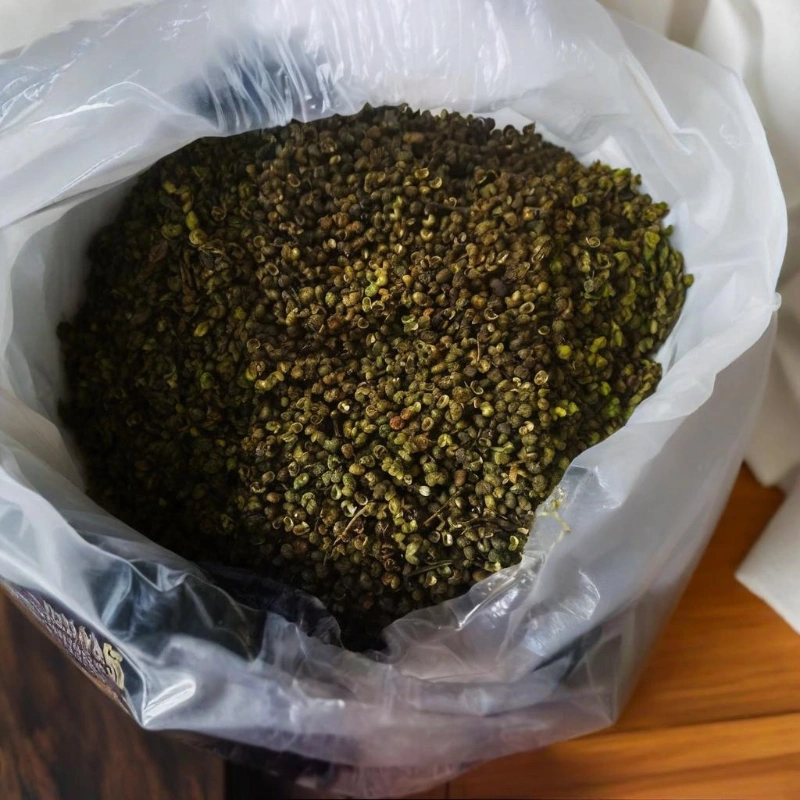
13. Recommended Dosage: Add 2–3 grams of green peppercorns per serving. Steamed Dishes: Green peppercorns enhance the aroma of steamed dishes. For example, in steamed fish, pork ribs, or tofu with green peppercorns, sprinkle green peppercorns with shredded ginger and minced garlic and steam the ingredients for a juicy and tender dish.
14. Recommended Dosage: Use 5–7 grams of green peppercorns per stew. Stewing: Green peppercorns add a numbing flavor to stewed dishes. For example, in stewed beef, pig's trotters, or potatoes with green peppercorns, slow-cook the green peppercorns along with other spices, softening and infusing the ingredients with flavor.
15. Recommended Dosage: Use 1–2 grams of green peppercorn oil per serving of noodles. Noodles: Green peppercorns enhance the flavor of noodles. For example, in cold noodles, fried noodles, or dandan noodles, mix green peppercorn oil with soy sauce, vinegar, and minced garlic. Toss well and serve for a spicy, fresh, and fragrant dish.
16. Recommended Dosage: Add 1 gram of green peppercorn powder to each serving of fried rice. Fried Rice: Green peppercorns add a unique flavor to fried rice. For example, in fried rice with scrambled eggs, seafood, or preserved meat, stir-fry the peppercorns with rice and side dishes for a fragrant aroma.
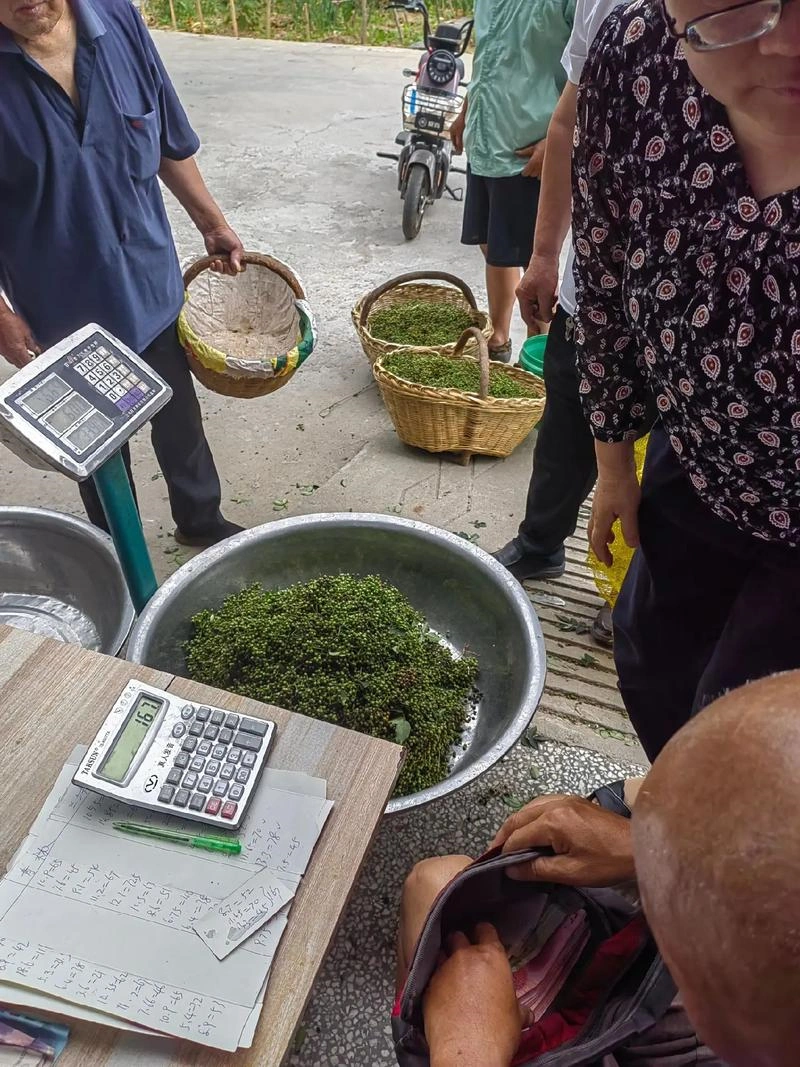
17. Recommended Dosage: Use 3 grams of green peppercorns per 500 grams of seafood. Pickled Seafood: Green peppercorns remove the fishy smell and enhance the flavor of seafood. For example, in pickled shrimp, crab, or squid, mix the peppercorns with salt, cooking wine, and ginger slices and marinate for several hours to create a fresh and delicious seafood.
18. Recommended Dosage: Add 5–6 grams of green Sichuan peppercorns per liter of brine. For braised dishes: Green Sichuan peppercorns add a numbing flavor to braised dishes. For example, to make green Sichuan peppercorn braised chicken feet, duck necks, or dried tofu, boil the green Sichuan peppercorns with star anise, cinnamon, soy sauce, and other seasonings to infuse the ingredients with flavor.
The diverse ways to use green Sichuan peppercorns not only enhance the flavor of dishes but also offer health benefits. Using green Sichuan peppercorns wisely in your daily diet can add variety and interest to your meals while enjoying their unique aroma and numbing flavor. Whether used in salads, stir-fries, stews, or pickles, green Sichuan peppercorns can enhance any dish. Experiment with different cooking methods to discover the diverse possibilities of green Sichuan peppercorns and enrich your dining experience.
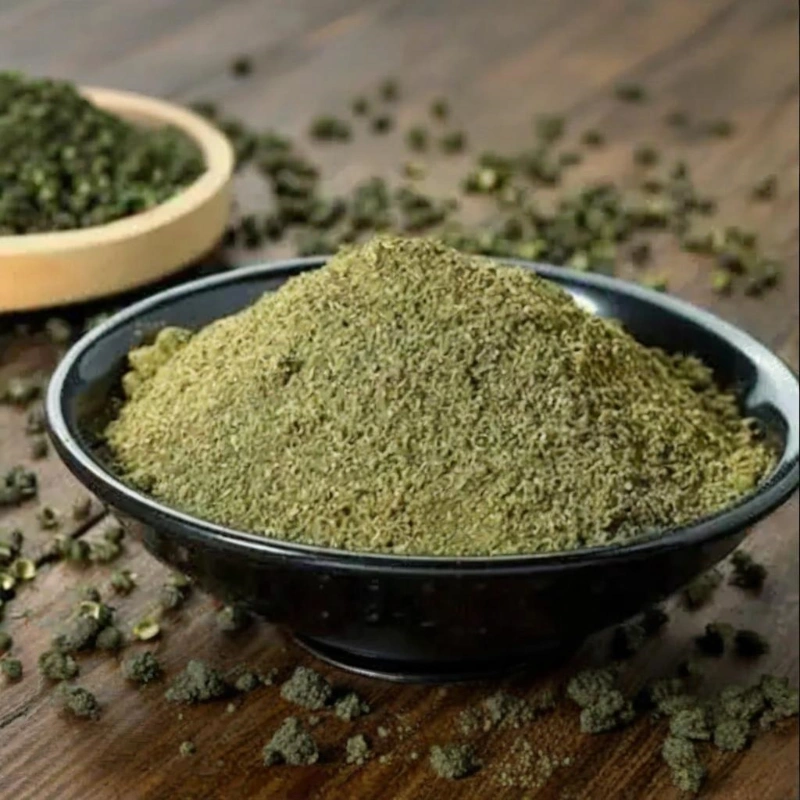
Green to Red Sichuan Peppercorn Ratio
The typical ratio of green to red Sichuan peppercorns is between 1:1 and 2:1, depending on personal preference (e.g., a stronger numbing or fragrant flavor) and the type of Sichuan peppercorns (fresh or dried).
Common Ratios and Selection Criteria
1:1 Ratio: Emphasizes a balanced numbing and fragrant flavor, suitable for dishes that prefer a balanced flavor.
1:2 Ratio: A slightly larger portion of red Sichuan peppercorns over green peppercorns enhances the aroma, perfect for enhancing flavor.
2:1 Ratio: Red peppercorns are the primary ingredient, with green peppercorns as a secondary ingredient, resulting in a more pronounced aroma and suitable for everyday cooking.
3:1 Ratio: Red peppercorns have a higher proportion, resulting in a richer aroma, suitable for those who prefer less numbing flavors.
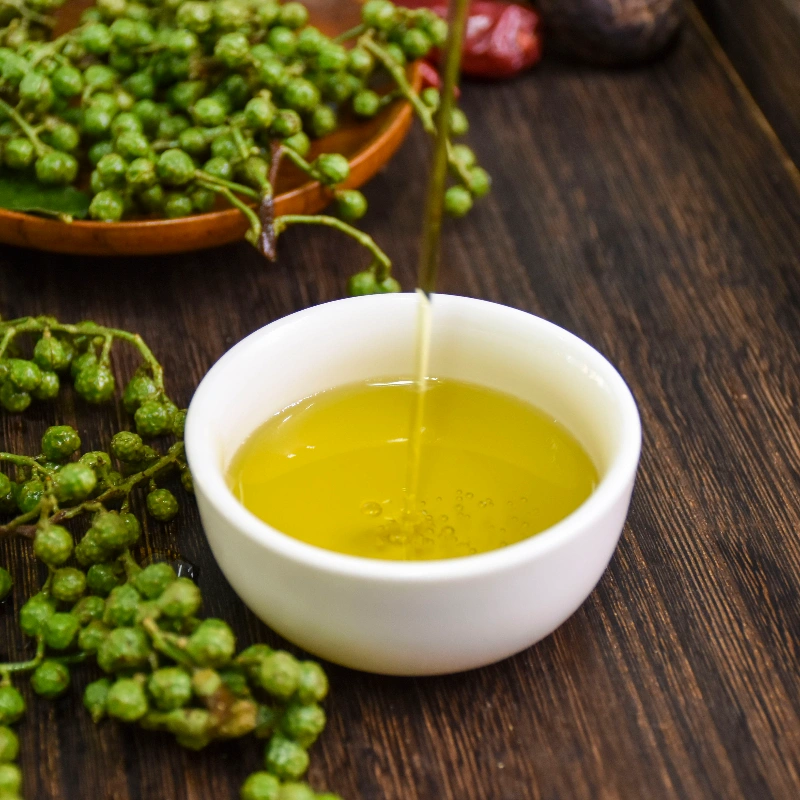
Tips for Choosing Peppercorns
Both green and red peppercorns have numerous small, protruding bumps on their skin. These are the oil glands. Generally speaking, the more bumps a peppercorn has, the more numbing and fragrant it is.
To determine the quality of a peppercorn, one must first look at its appearance. Good-quality peppercorns are uniform in size, have a pure and uniform color, are fuller in shape, and have large, densely packed oil cells. They should feel dry and slightly prickly.
Second, smell the aroma. If the flavor is pure and without noticeable off-flavors, choose those with a pure, rich aroma.
Third, taste the flavor. Put a peppercorn in your mouth and test it. If the numbing flavor is quick, noticeable, and lasts strongly, then this is a good quality peppercorn.
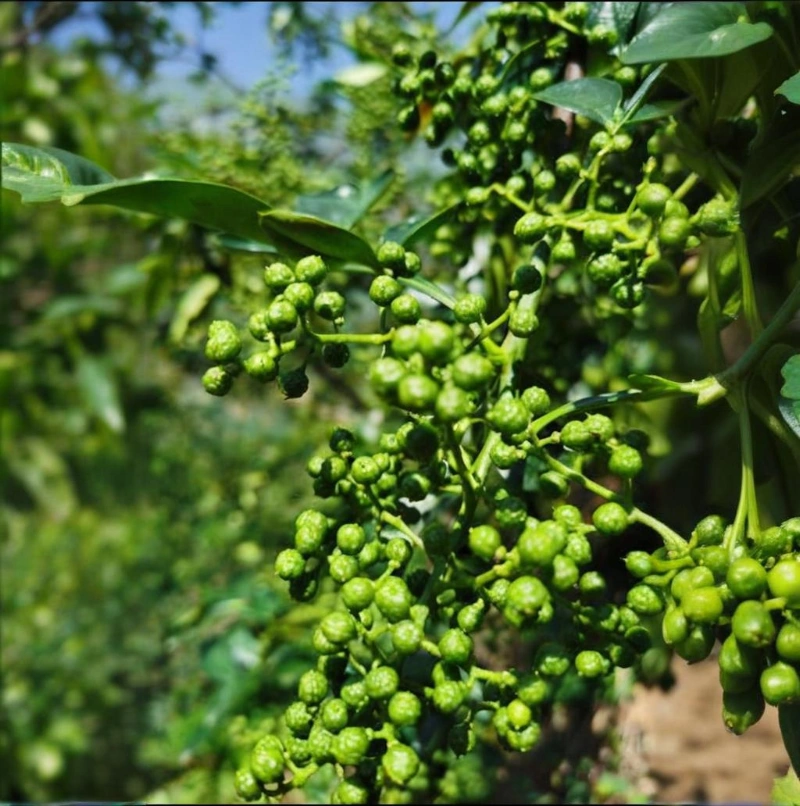
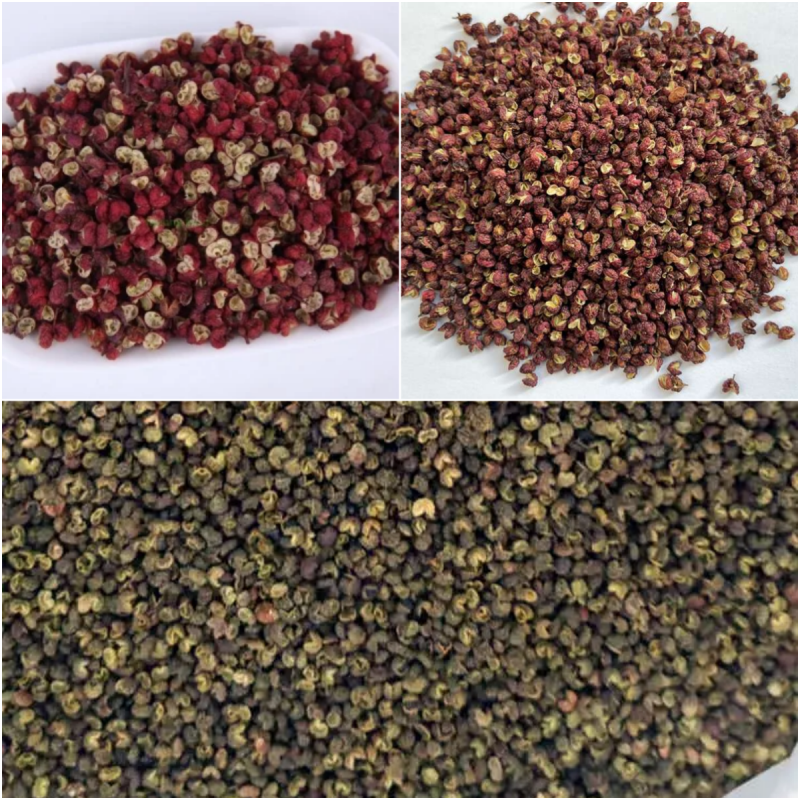
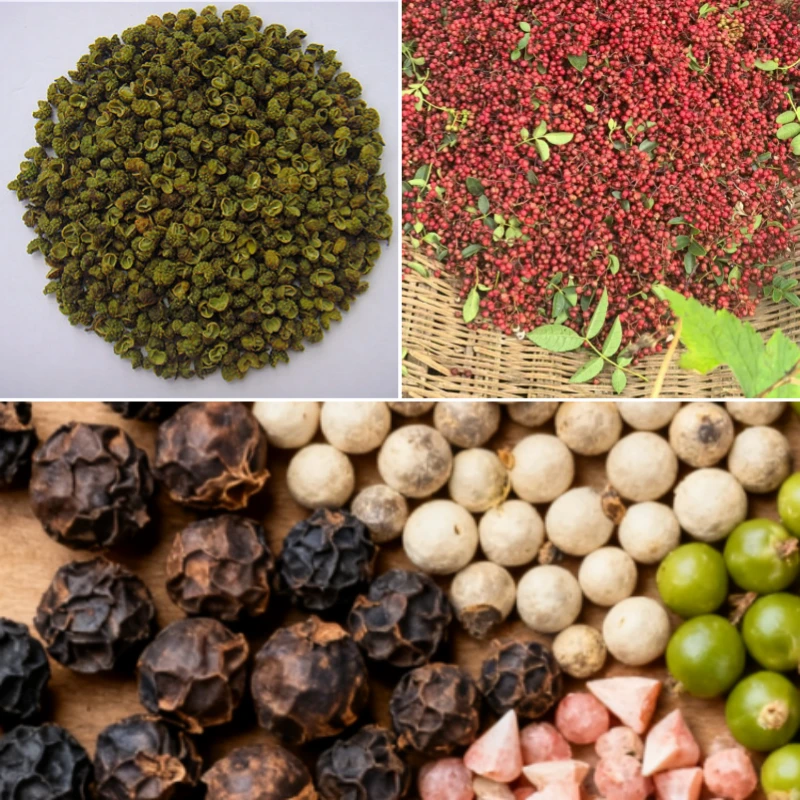
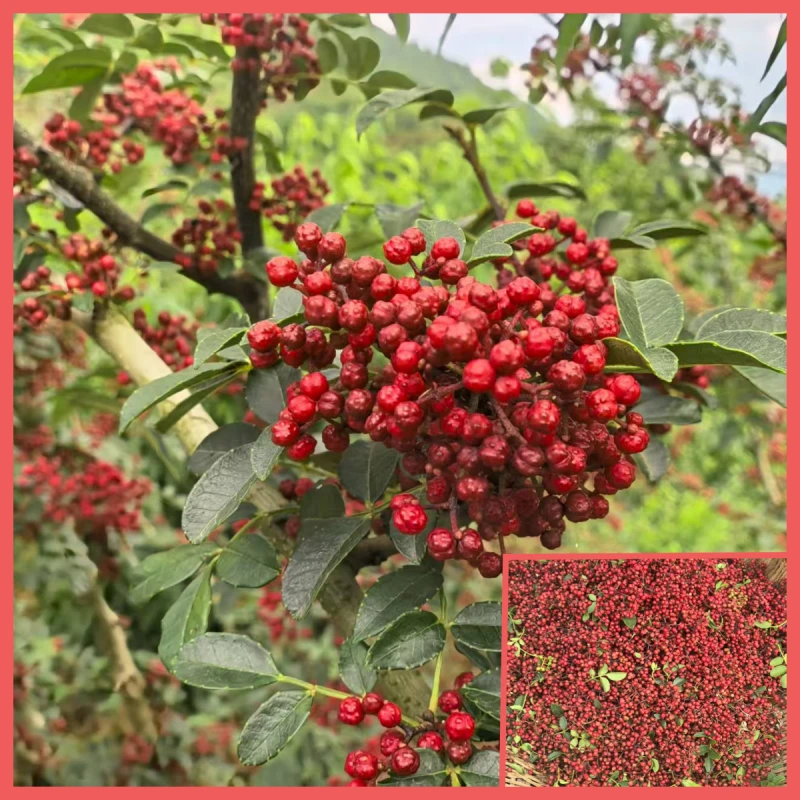
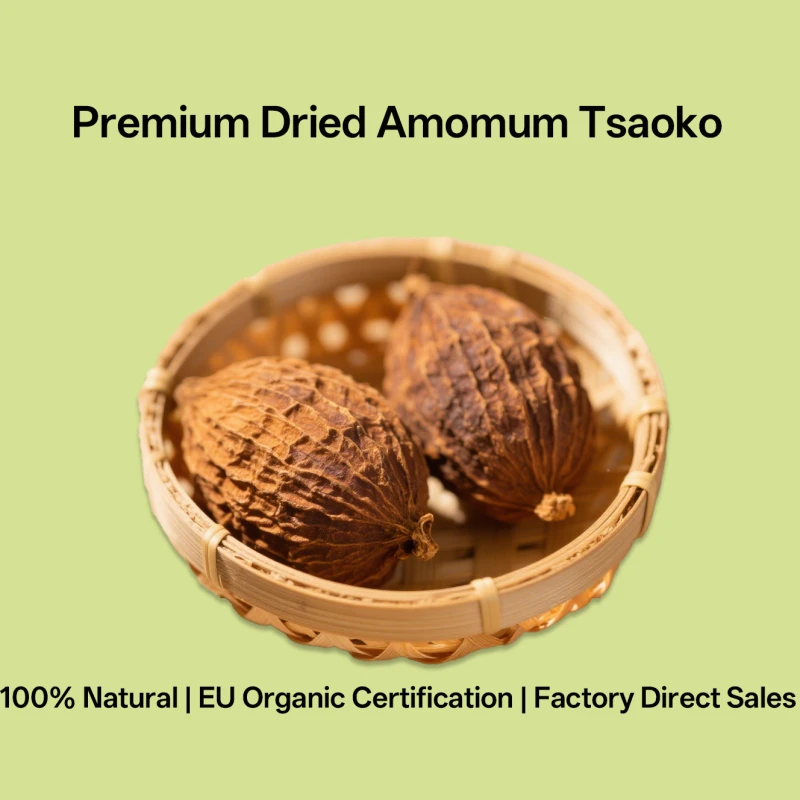
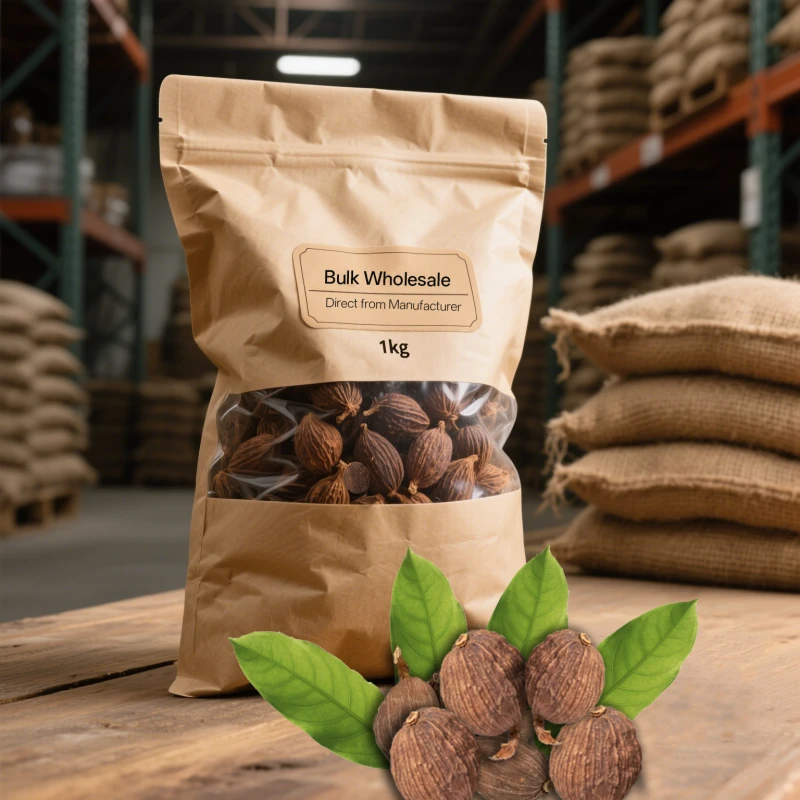
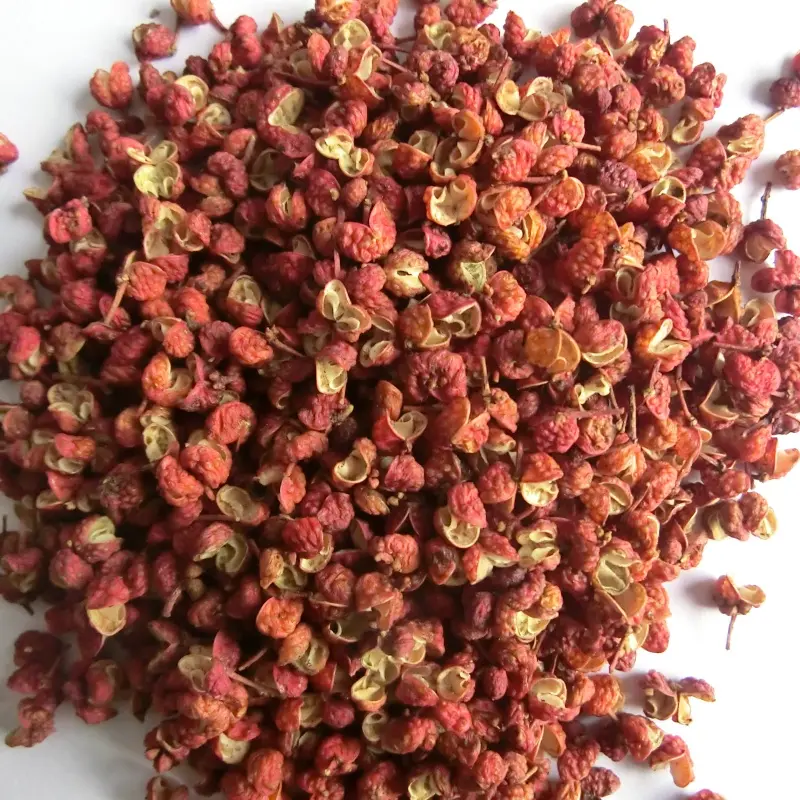
811.webp)
